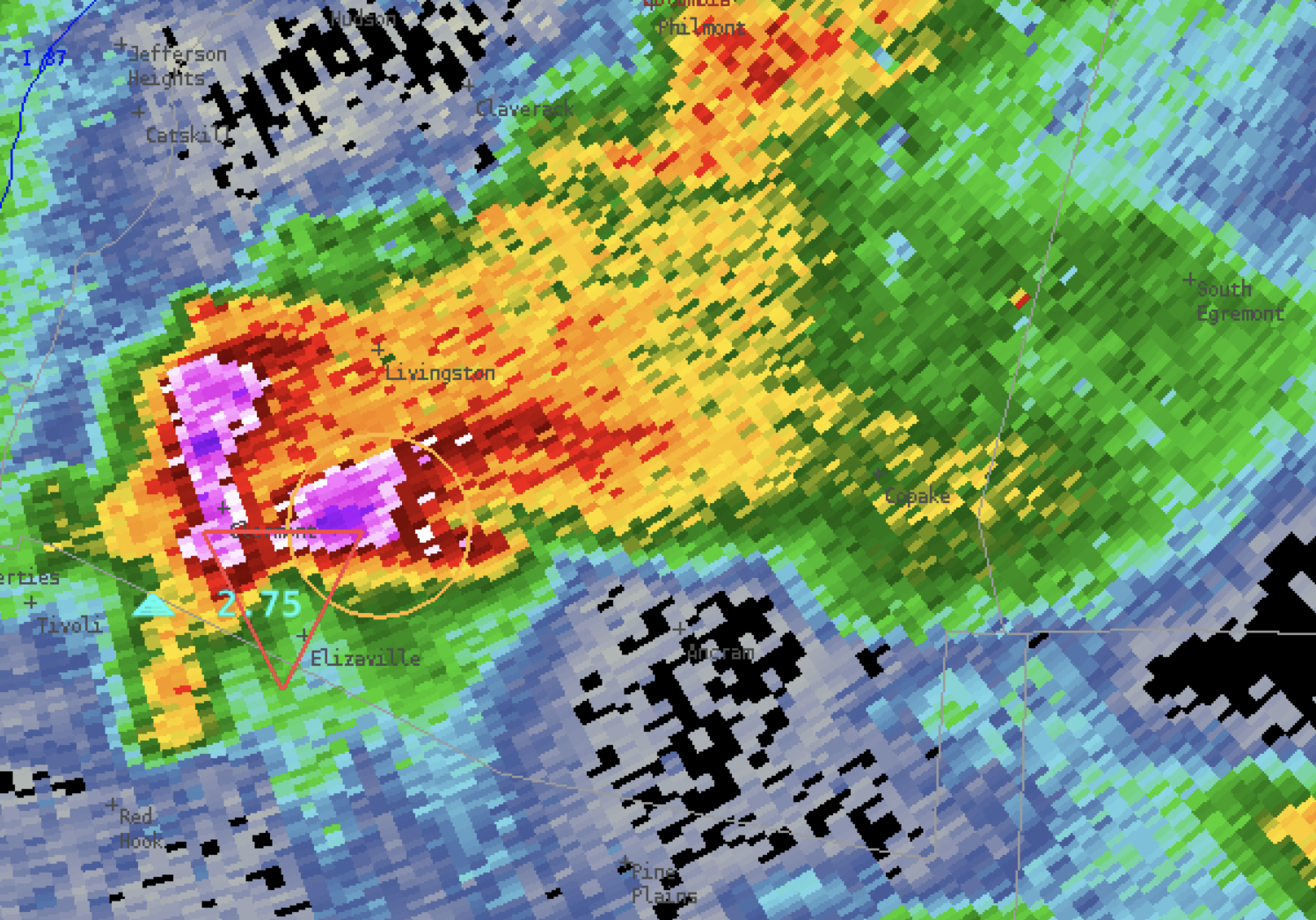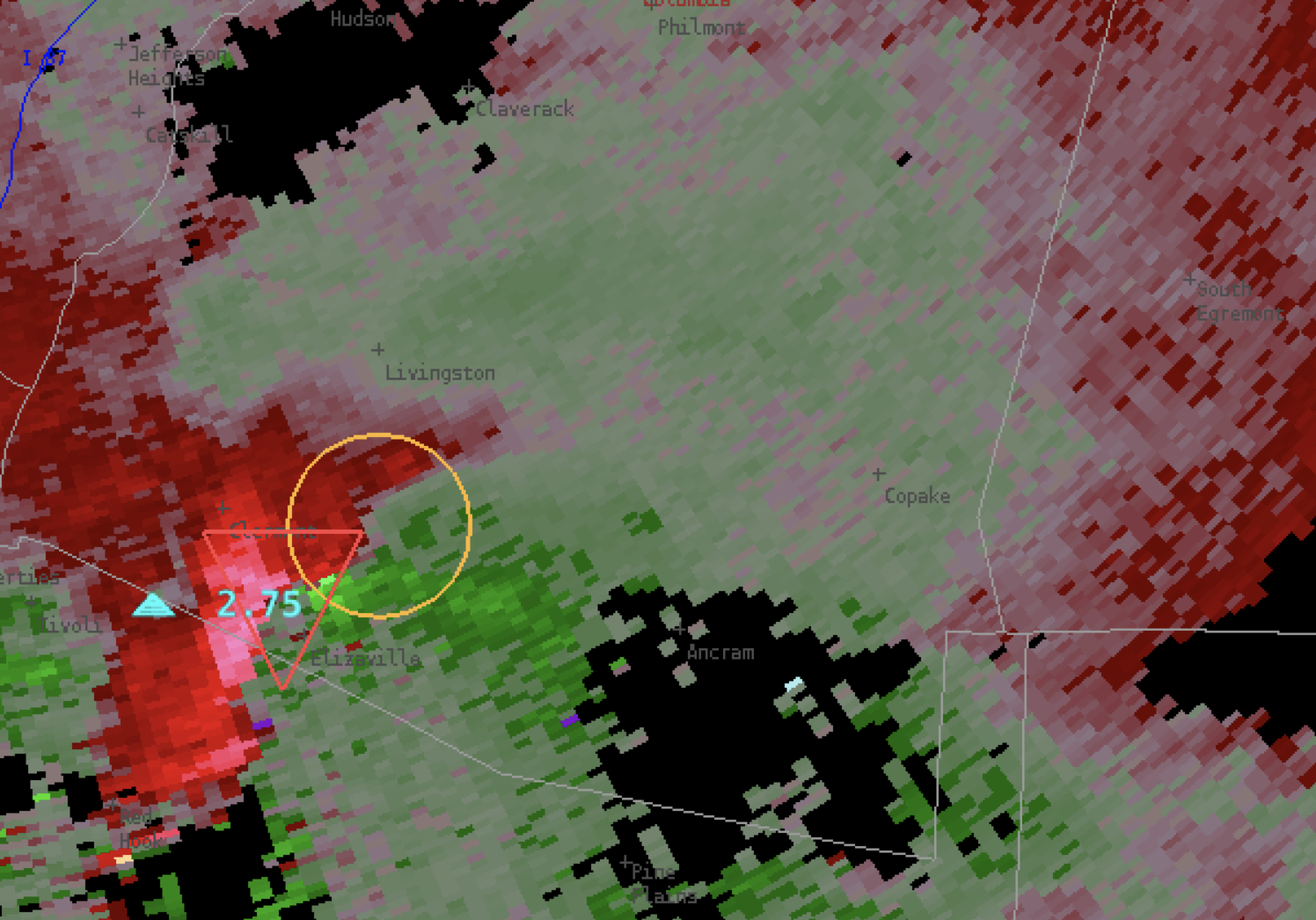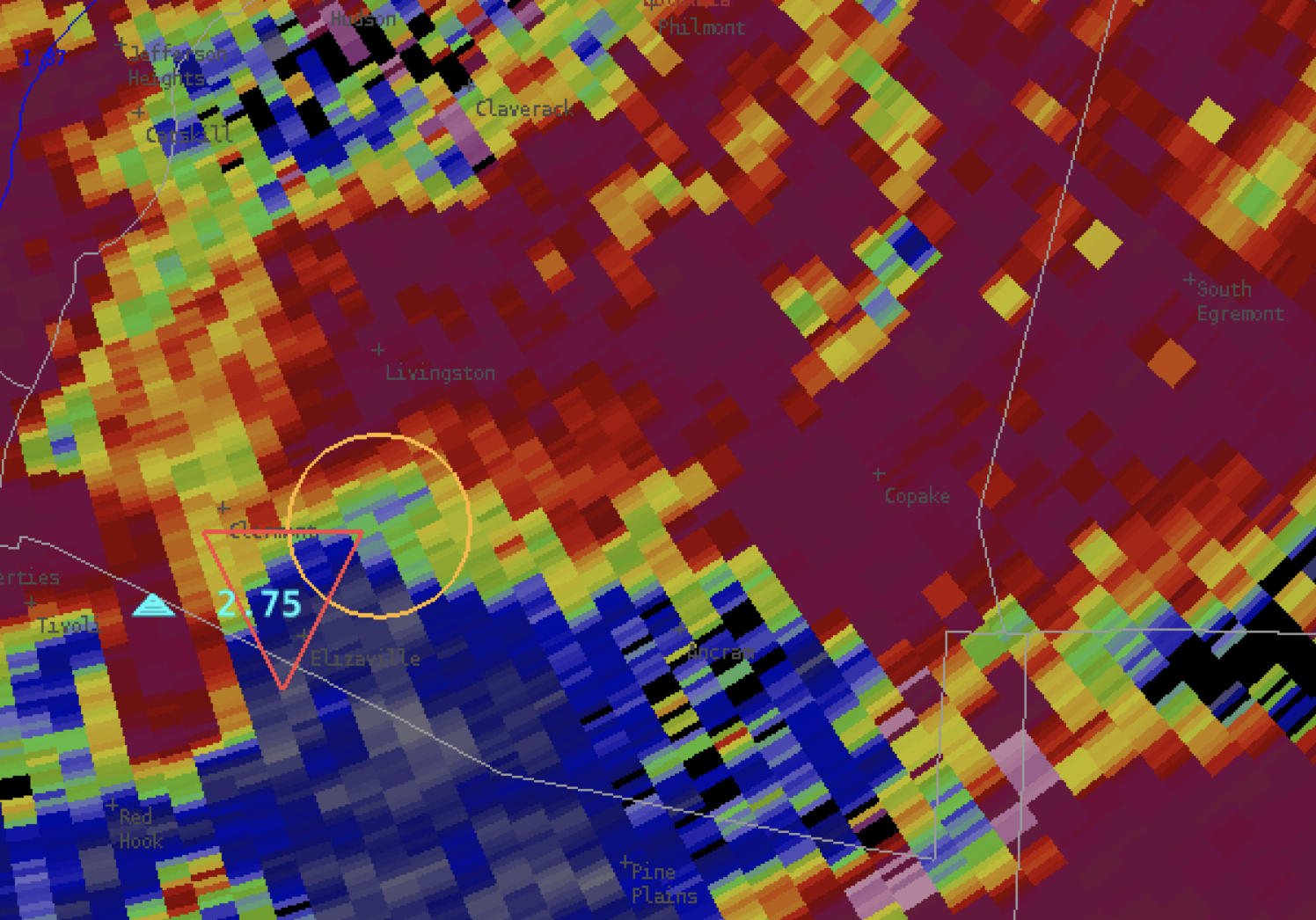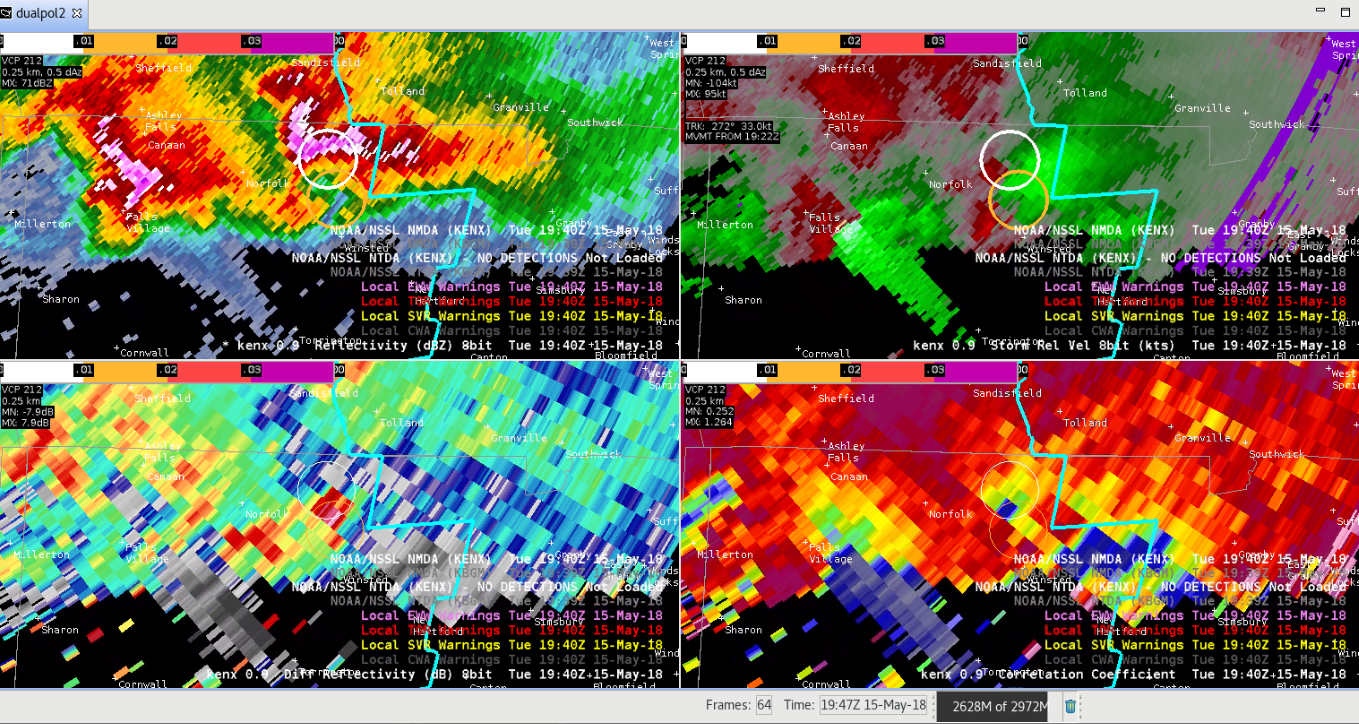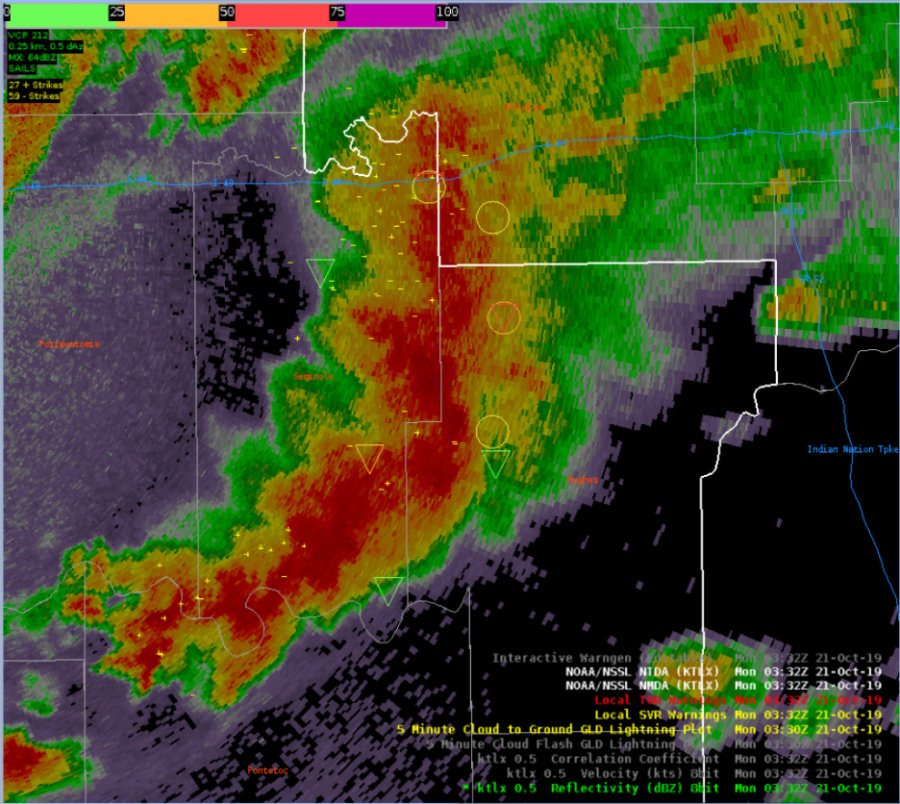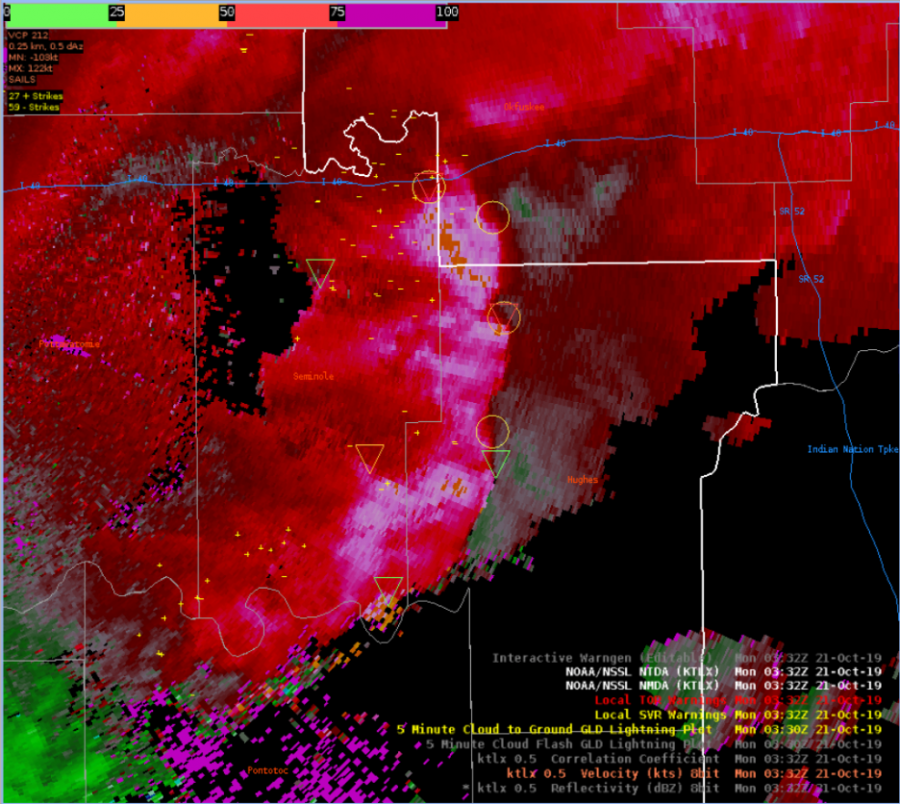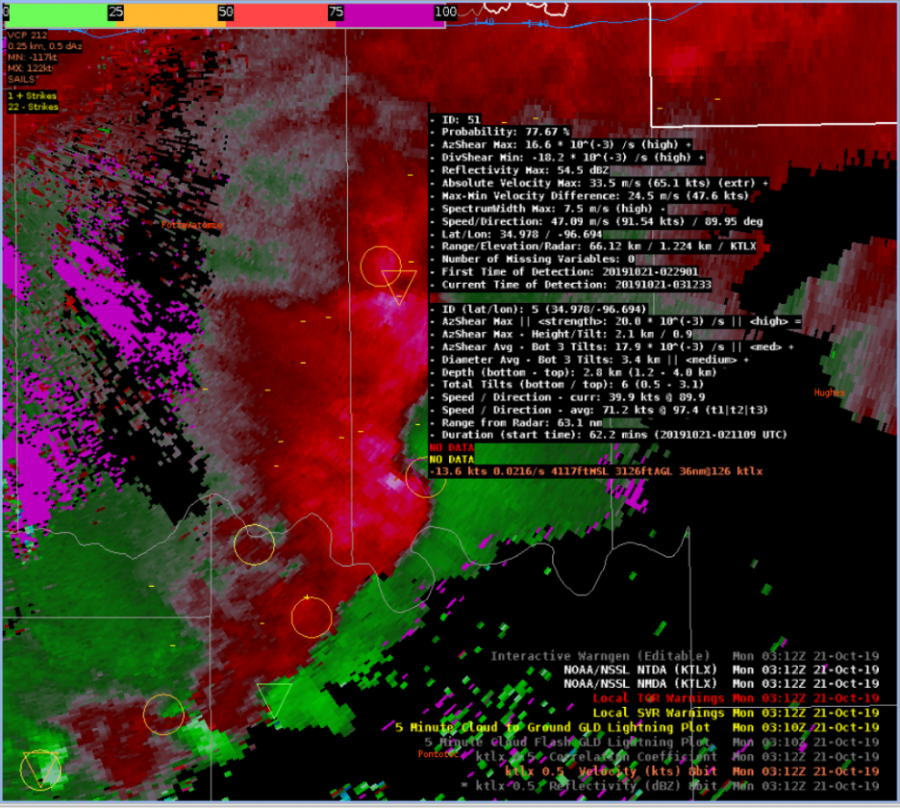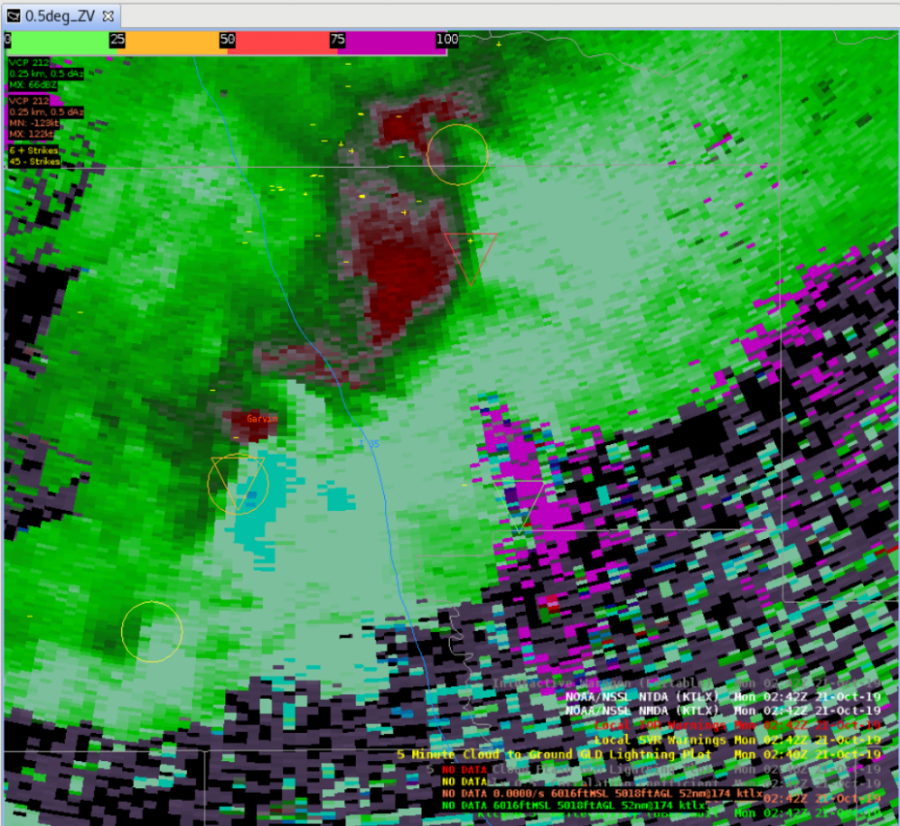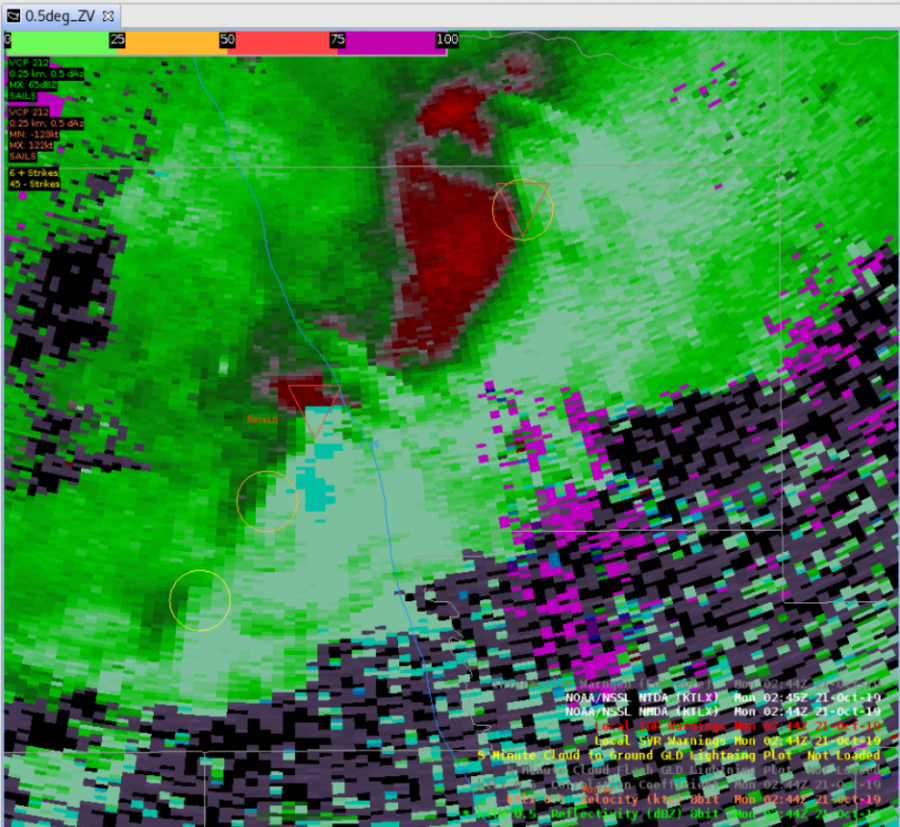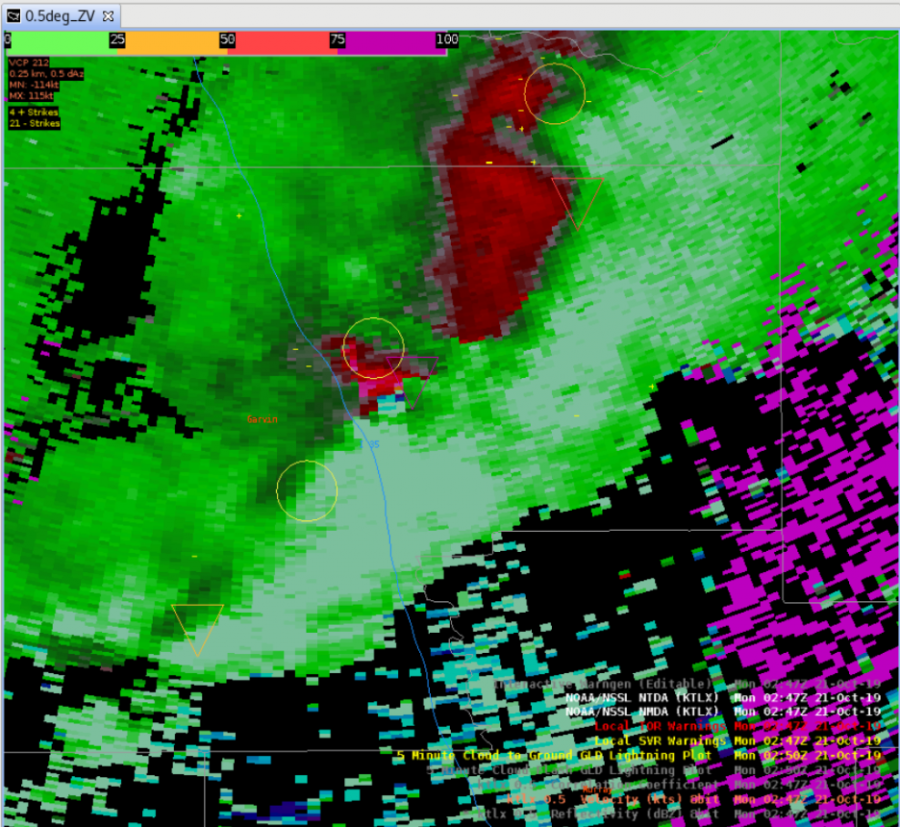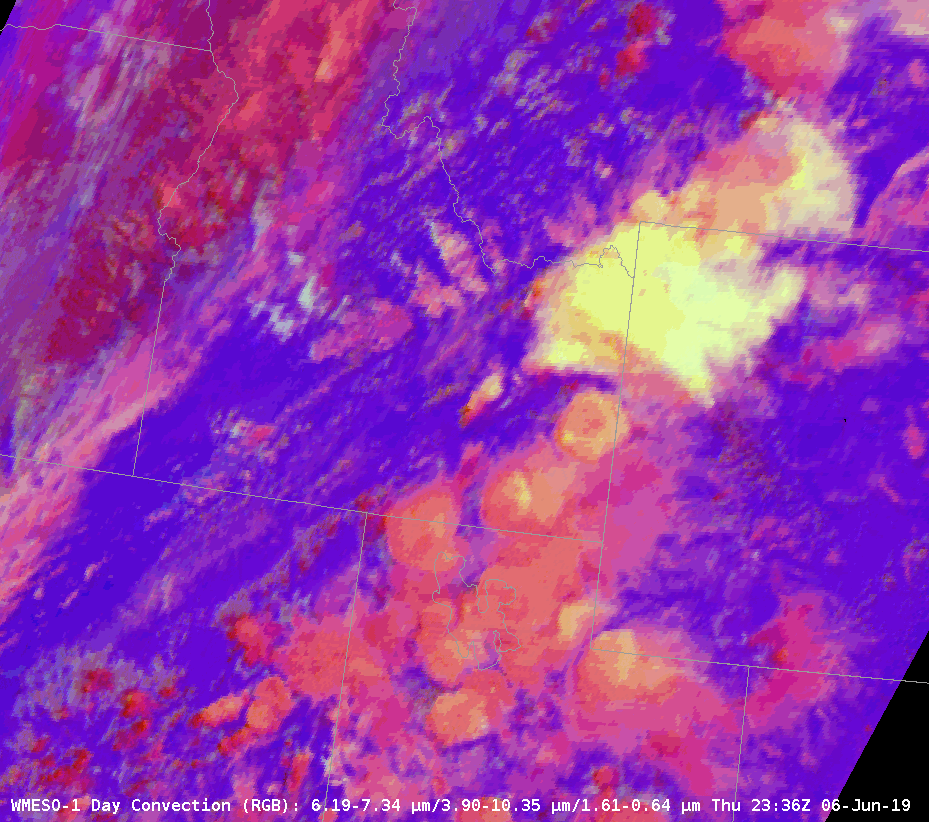During the OUN case today we noticed that both the NMDA and NTDA would occasionally jump in location relative to where we thought that the actual tornadic circulation would be.
Beginning at roughly 300z there was a northeasterly surge in reflectivity along the deep sheare 0-6km axis. In turn we noticed that a couplet had formed along the northern extent of that reflectivity surge. The NMDA captured this couplet however the NTDA did not. However, this is the same area that the NTDA had been scanning with the id of 51 which was described by a different blog post highlighting the length of time in which the NTDA and NMDA were able to track features. Interestingly enough, while the NTDA did not display at 300z, it did the scan before and the scan after with the same ID value.

 .
.
Example Z at 300z (left) and Storm Relative Velocity (right)
What was particularly interesting about this case is that we started to notice that the NMDA and NTDA would jump from what appeared to be the tornadic circulation to the leading edge of the reflectivity where the azimuthal shear was perhaps maximized. The following video is a feature following zoom where the feature zoomed in on is the tornadic circulation in question.
spiff_jump_042021_1140_low
– Spaceman Spiff
